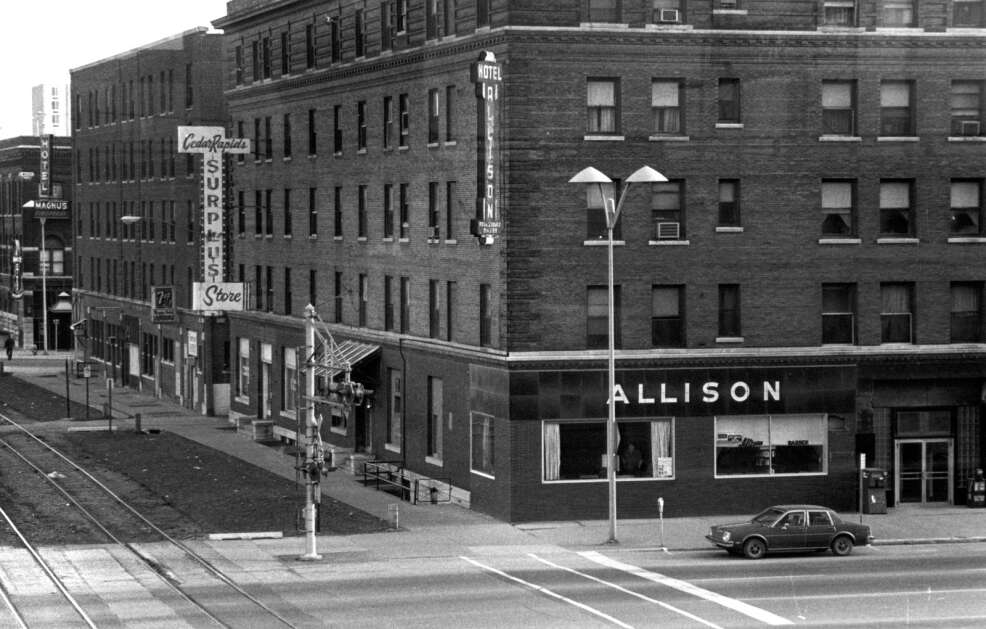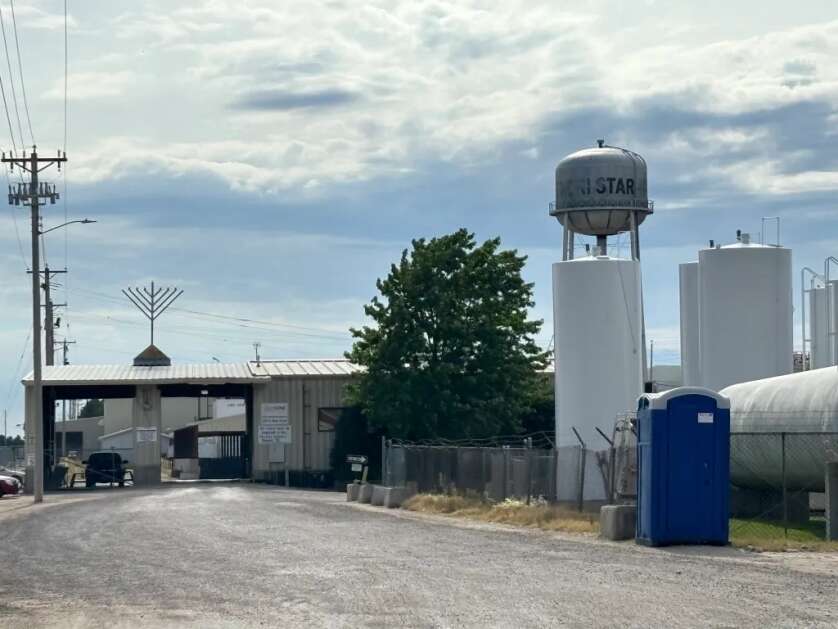The Gazette uses Instaread to provide audio versions of its articles. Some words might not be spoken correctly.
Over the past 175 years, Cedar Rapids has seen the construction of numerous hotels. Decades later, two of them that had been constructed across from one another on Fourth Street SE in the early 1900s suffered a same fate.
Following another hotel proposal known as the Third Avenue Hotel, which was subsequently renamed the Montrose, came the first to be constructed, the Allison.
The Allison was constructed at the intersection of First Avenue and Fourth Street SE, where the former Clifton Hotel once stood. In 1903, the Clifton burned down. After a year, sufficient funds were collected to start construction on the Allison.
The Gazette stated in November 1905 that the Allison would be completely fireproof. Every detail of the concreting has been done to a high standard. Aside from the wooden window sills, no other portion of the building is at risk of catching fire.
The Allison’s construction was about complete in 1906. The owners chose not to complete the fifth storey because they were uncertain if a hotel of that scale would be occupied.
After it was quickly established that the area would actually be required, Loomis Brothers was engaged to finish the project in 1907. The Allison had 150 rooms when it was finished. During the Great Depression in 1935, flats were built on the fifth floor.
The Magnus Hotel
At Second Avenue and Fourth Street SE, across the alley from the Allison, work on a second fireproof hotel started in 1912. Originally consisting of 127 rooms spread across five storeys, the Magnus provided its guests with a Turkish bath in the basement. A 230-foot private well was sunk by the hotel to provide water for its guests.
When an alcoholic off-duty Cedar Rapids firefighter named Richard LeMont started at least six fires between the two hotels in June 1947, the hotels’ claims to be fireproof were put to the test. There was no serious harm done. At his trial, LeMont entered a not guilty plea while acknowledging to media that he was the one who started the fires. He was given a 10-year sentence at the Fort Madison Penitentiary after a jury found him guilty on October 16.
The Magnus hotel closed in 1978 due to severe damage. In 1979, the Haunted Hotel was sponsored by the Cedar Rapids Jaycees.
Parking lots
The Civic Development Association, a private investment firm that was first established in 1946 to acquire land for public parking, declared in 1983 that it would purchase the hotels and demolish them to make room for parking lots.
The Allison was inhabited by elderly and impoverished people, whereas the Magnus had been abandoned for a few of years.
Speaking on behalf of the Civic Development Association, Herman Ginsberg acknowledged the difficulties experienced by the inhabitants who had been displaced from the Allison and stated that the organization was considering the possibility of converting the Montrose into a home for those renters.
Firefighters were called to the Magnus in April 1983 after gas inside a metal pipe was ignited by a cutting torch used by a member of the salvage crew. It was intended that the gas be turned off. A few days later, firemen were called to the Allison by another alert. A broken steam line was the cause of a cloud of steam.
Prior to its demolition, the Allison’s contents were put up for auction on May 28.
Demolition
Both hotels were to be demolished by Cedar Rapids-based Gee Grading & Excavating. First to arrive was the Allison on June 1, 1983. All that was left by June 22 was the Allison sign.
Immediately thereafter the Magnus was demolished. But there were repercussions for the work.
Gary Dvorak, who runs Caf de Klos, a Magnus next-door neighbor located at 322 Second Ave. SE, said he was forced to close his business because to the dangerous atmosphere caused by the demolition.
Cracks appeared in the walls of the café and the building next to it, which is now home to Bricks Bar & Grill, as the Magnus’ deconstruction went on.
Owner Moe Richardson stated that the expense of strengthening the wall was too high, so it was decided to remove the cafe building in April 1984.
Parking problems downtown were supposed to be lessened by the temporary parking space that was built where the hotels and cafe used to be.
In 1997, the Civic Development Association was dissolved. The Renaissance Group took over its responsibilities.
[email protected] is the comment address.






